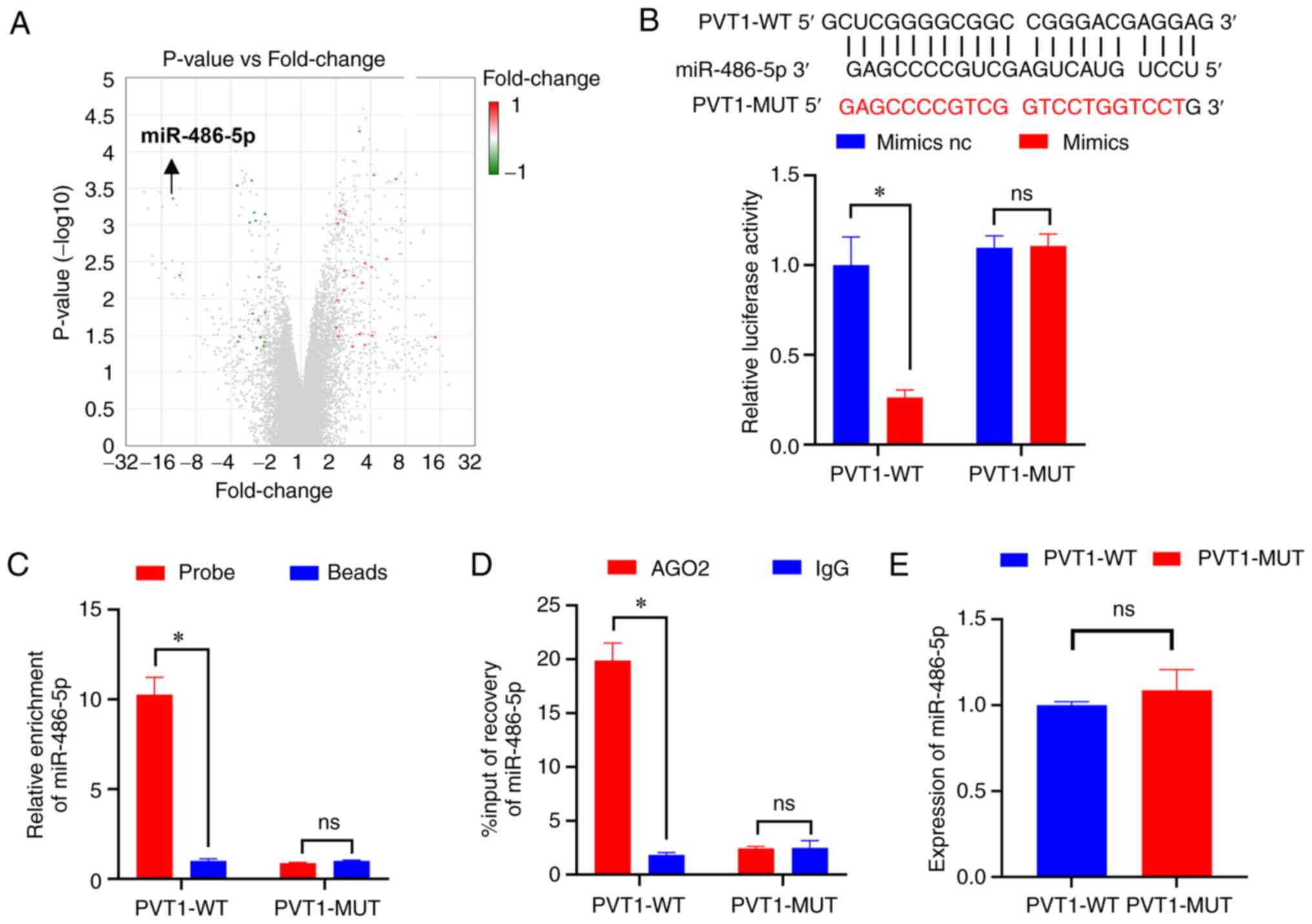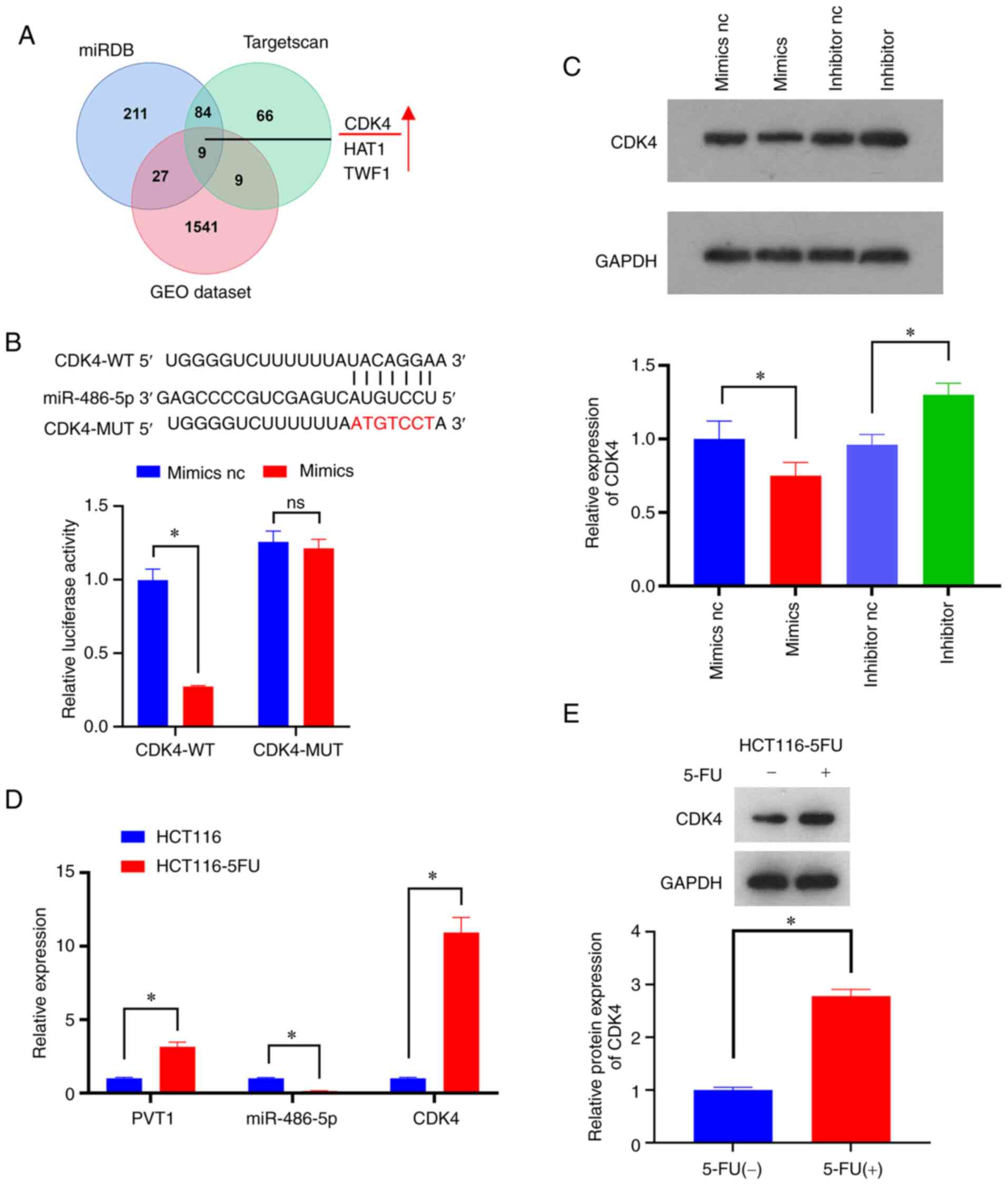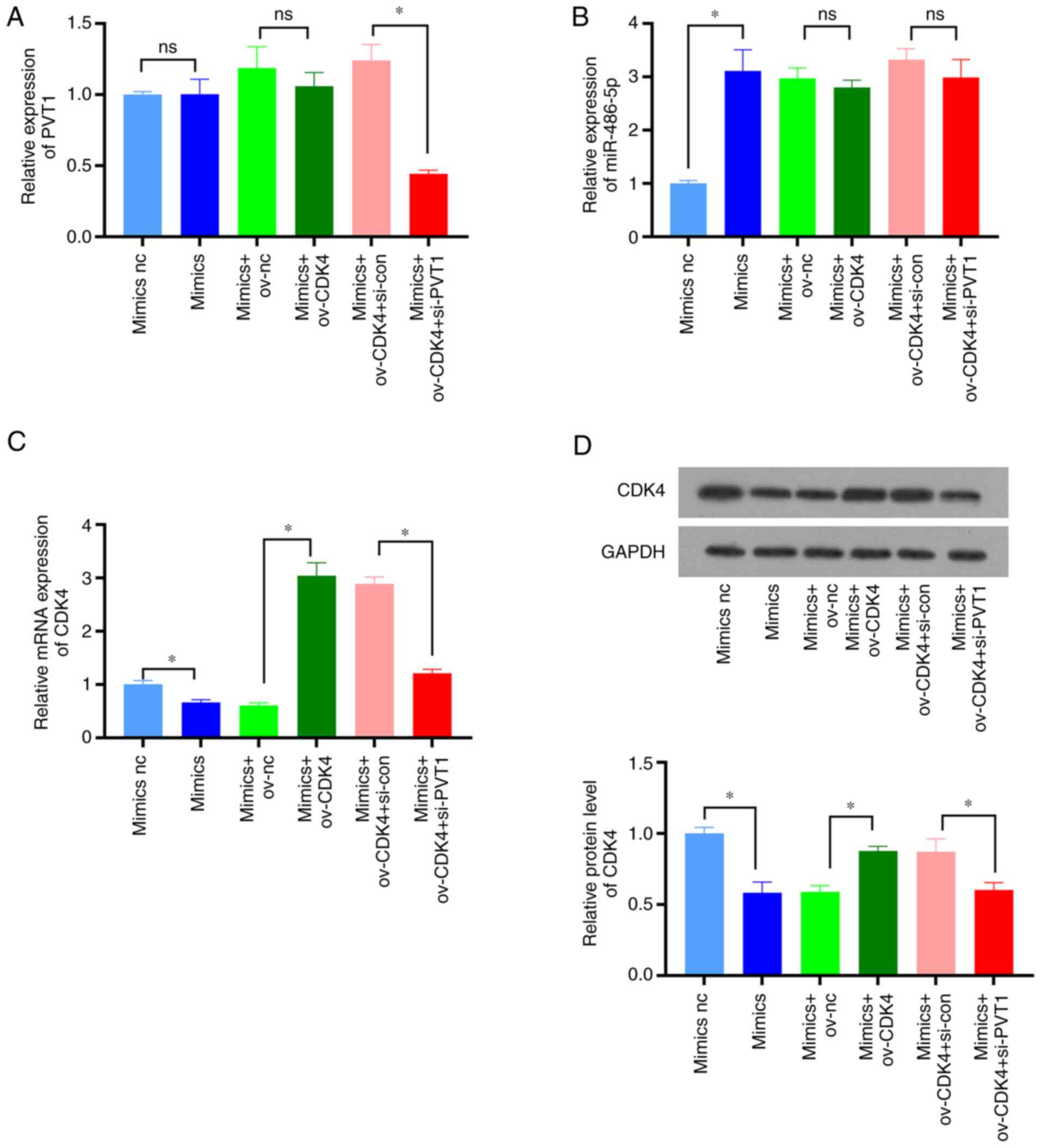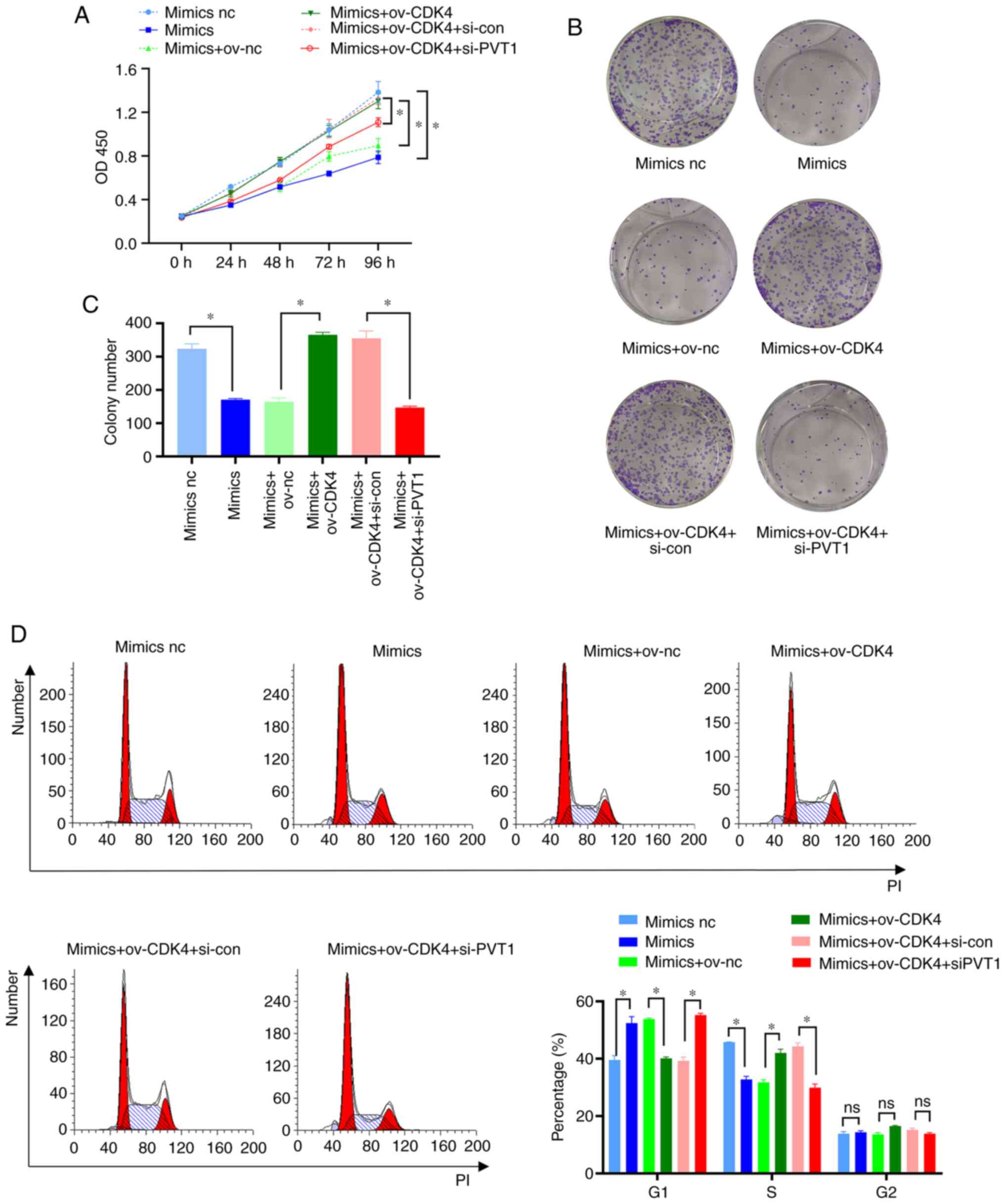PVT1 promotes resistance to 5‑FU in colon cancer via the miR‑486‑5p/CDK4 axis
- Authors:
- Published online on: June 24, 2022 https://doi.org/10.3892/ol.2022.13400
- Article Number: 280
-
Copyright: © Luo et al. This is an open access article distributed under the terms of Creative Commons Attribution License.
Metrics:
Total
Views: 0 (Spandidos Publications: | PMC Statistics:
)
Total PDF Downloads: 0 (Spandidos Publications: | PMC Statistics:
)
Abstract
Drug resistance in tumors is a major issue, limiting the curative efficacy of currently available cancer chemotherapeutics. 5‑Fluorouracil (5‑FU) is a commonly applied therapeutic drug in colon cancer patient regimens; however, the majority of patients develop resistance to 5‑FU in the later stages of the disease, rendering this chemotherapy ineffective. Drug resistance is the main factor underlying the poor prognosis of patients with colon cancer. In recent years, a number of studies have confirmed that long non‑coding (lnc)RNAs may play vital roles in tumor resistance. In the present study, the Gene Expression Omnibus (GEO) and lncRNADisease2 databases were screened for colon cancer‑associated expression patterns of lncRNA plasmacytoma variant translocation 1 (PVT1). Subsequently, reverse transcription‑quantitative polymerase chain reaction (RT‑qPCR) was used to detect changes in PVT1 expression in resistant cell lines, and a Cell Counting Kit‑8 (CCK‑8) assay kit was used to assess the effects of PVT1 knockdown on the half maximal inhibitory concentrations of parental and 5‑FU‑resistant HCT116 cells. Subsequently, CCK‑8, clone formation, and flow cytometric assays were performed to investigate the effects of PVT1 knockdown on the sensitivity of HCT116‑5FU‑resistant cells to 5‑FU. Dual‑luciferase assay, RNA pull‑down and RNA immunoprecipitation assays verified the interactive regulation of PVT1, miR‑486‑5p and cyclin dependent kinase 4 (CDK4). PVT1 was highly expressed in HCT116‑5FU‑resistant cells, as compared to its expression in HCT116 parental cells. PVT1 knockdown significantly reduced the resistance of HCT116‑5FU‑resistant cells to 5‑FU. In addition, PVT1 upregulated CDK4 expression by adsorbing miR‑486‑5p; however, CDK4 overexpression restored the effects of miR‑486‑5p inhibition on HCT116‑5‑FU‑resistant cells. Additionally, PVT1 knockdown partially rescued CDK4 overexpression in HCT116‑5‑FU‑resistant cells. On the whole, the findings of the present study suggest that PVT1 promotes the resistance of colon cancer cells to 5‑FU by regulating the miR‑486‑5p/CDK4 axis. Therefore, PVT1 may prove to be a potential target for counteracting resistance to 5‑FU in colon cancer therapy.
















